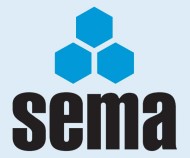 This month we bring you two enquiries, the first regarding the safe storage of products with potential safety issues, and the second query about making changes to part of a racking system and how that change may affect the whole.
This month we bring you two enquiries, the first regarding the safe storage of products with potential safety issues, and the second query about making changes to part of a racking system and how that change may affect the whole.
“Safety Match” Storage
Q: We have previously purchased your Guide to Racking and Shelving Surveys, which we found constructive and helpful.
We have a requirement from a Customer to store, pack and distribute boxes of “Safety Matches,“ linked to a consumer product (packed with decorative candles.)
Do you publish any guidelines on the Storage of Safety matches – or can you offer any advice on UK Legislation which applies?
A. Unfortunately we do not publish any guidance on this subject and truthfully would not consider ourselves as experts in the field.
Having said this, we would suggest perhaps consulting your local fire officer on the matter as they become involved with planning matters particularly where there might be a serious fire risk and are usually good for some free advice. There was a major fire in Holland a few years ago where a warehouse in the middle of a city was storing fireworks. This caught fire with the local fire authority unaware that these materials were being stored in these premises, so understandably they have concerns on these subjects.
In theory safety matches should be what they are called and should not be prone to self ignition. However if a fire started due to another cause, they would likely burn fairly fiercely though from what you say they are in packs with candles for despatch and presumably there are only a small number in each pack. However we are not certain if you are accepting matches in bulk and repacking with the candles, or if it arrives with you in a pre packed state.
We would suggest a discussion with your insurers might also be appropriate in this situation together with a review of whatever fire suppression system and evacuation procedures that you have in place. A source of further advice might be the match company itself who presumable will be handling these products all the time and will be aware of whatever regulations and guidance is available.
Altering the structure of existing racking
Q: We are a small company and rent warehouse space that has pre-existing racking on two walls of the warehouse.
We need to remove the first part of one of the racks, but we are not sure if doing this will render the rest of the racking, on this side of the warehouse, unstable.
Please can you recommend a company locally who could make a site visit and discuss this with us? We would also like them to check the weight capacity of the units.
A. The difficult part of what you outline is the checking of the carrying capacity of the racking, which is likely to be beyond the capability of most local installation companies. If the racking has been there for some time and does not have a supplier’s sign on the end of the run providing safe working load and other information, this is a serious problem.
There is a requirement under PUWER that work equipment such as racking should be inspected regularly to ensure that it is in good working order and also information has to be provided to operatives on how to use the racking safely. Knowing what it will safely carry is fairly fundamental to the latter requirement.
We would suggest you need to identify the manufacturer of the racking and approach them to request information on the carrying capacity of the rack in the configuration that you currently have it. If you do not know who made or supplied the racking, we may be able to identify it for you if you provide a couple of digital photographs ideally of the beam to upright connections.
If we are able to identify the manufacturer then they will have load tables that can be used to identify a safe load capacity for you and also will be able to supply load warning signs.
If it is not possible to identify the manufacturer, there are some consulting engineers who carry out this kind of appraisal, however it is a significant amount of work and if there is only a small amount of fairly old racking it might be cheaper to replace it with new.
Once this part of the problem has been resolved then either the manufacturer might be able to provide an installation team to take down part of the racking or we can identify a local contractor who could carry out this kind of work.
sema Tel: 0121 601 6350 www.sema.org.uk




Comments are closed.